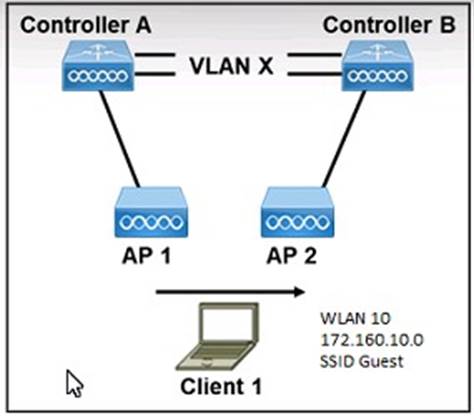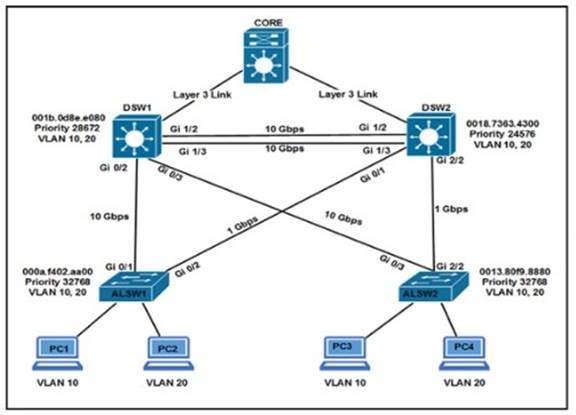- (Topic 4)
Refer to the exhibit.
Both controllers are in the same mobility group. Which result occurs when client 1 roams between APs that are registered to different controllers in the same WLAN?
Correct Answer:
D
- (Topic 2)
Which method is used by an AP to join HA controllers and is configured in NVRAM?
Correct Answer:
A
An AP can be “primed” with up to three controllers—a primary, a secondary, and a tertiary. These are stored in nonvolatile memory so that the AP can remember them after a reboot or power failure.
- (Topic 2)
Which access point mode allows a supported AP to function like a WLAN client would, associating and identifying client connectivity issues?
Correct Answer:
C
As these wireless networks grow especially in remote facilities where IT professionals may not always be onsite, it becomes even more important to be able to quickly identify and resolve potential connectivity issuesideally before the users complain or notice connectivity degradation. To address these issues we have created Cisco’s Wireless Service Assurance and a new AP mode called “sensor”mode. Cisco’s Wireless Service Assurance platform has three components, namely, Wireless PerformanceAnalytics, Real-time Client Troubleshooting, and Proactive Health Assessment. Using a supported AP ordedicated sensor the device can actually function much like a WLAN client would associating andidentifying client connectivity issues within the network in real time without requiring an IT or technician to beon site.
Reference:
https://content.cisco.com/chapter.sjs?uri=/searchable/chapter/content/dam/en/us/td/docs/wireless/controller/technotes/8-5/b_Cisco_Aironet_Sensor_Deployment_Guide.html.xml
- (Topic 2)
What is a characteristic of Cisco DNA Northbound APIs?
Correct Answer:
C
- (Topic 4)
Refer to the exhibit. Which two commands ensure that DSW1 becomes root bridge for VLAN 10? (Choose two)
Correct Answer:
CD
Ref: Scaling Networks v6 Companion Guide
“STP
…
Extended System ID
…
Bridge Priority
The bridge priority is a customizable value that can be used to influence which switch becomes the root bridge. The switch with the lowest priority, which implies the lowest BID, becomes the root bridge because a lower priority value takes precedence.
…
The default priority value for all Cisco switches is the decimal value 32768. The range is 0 to 61440, in increments of 4096. Therefore, valid priority values are 0, 4096, 8192, 12288, 16384, 20480, 24576, 28672, 32768, 36864, 40960, 45056, 49152, 53248, 57344, and 61440. A bridge priority of 0 takes precedence over all other bridge priorities. All other values are rejected.